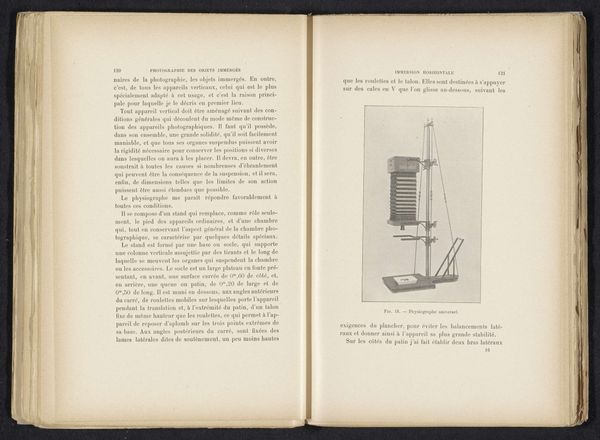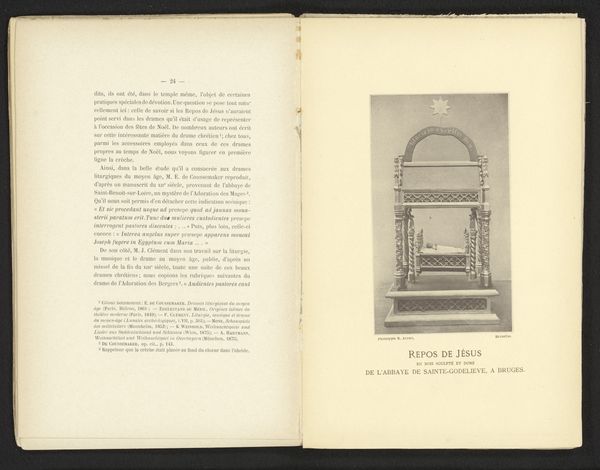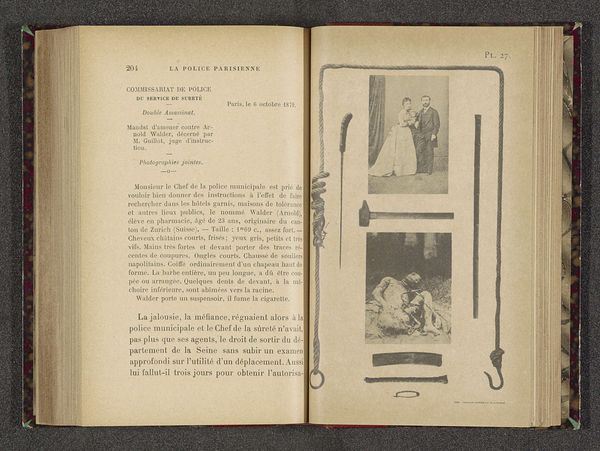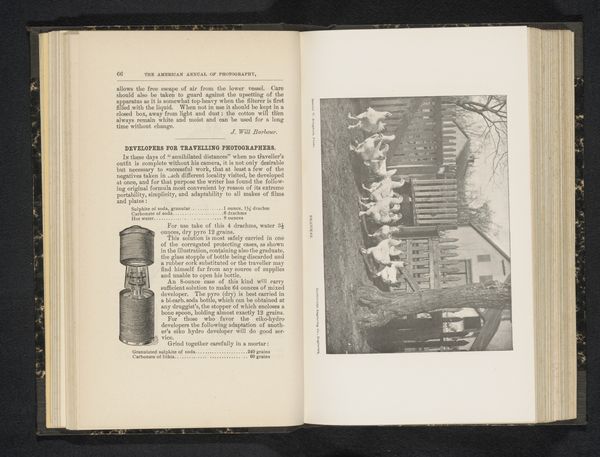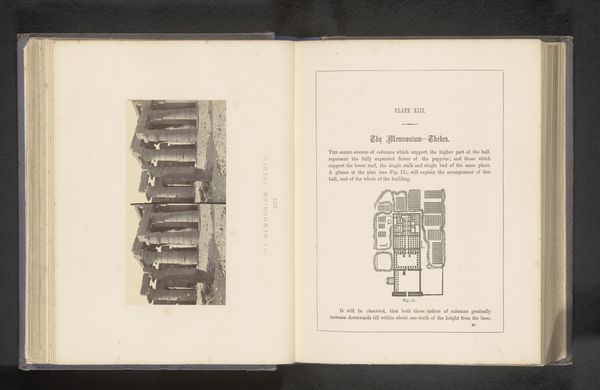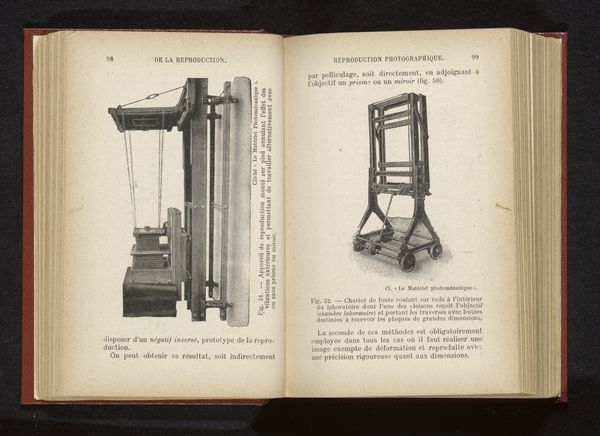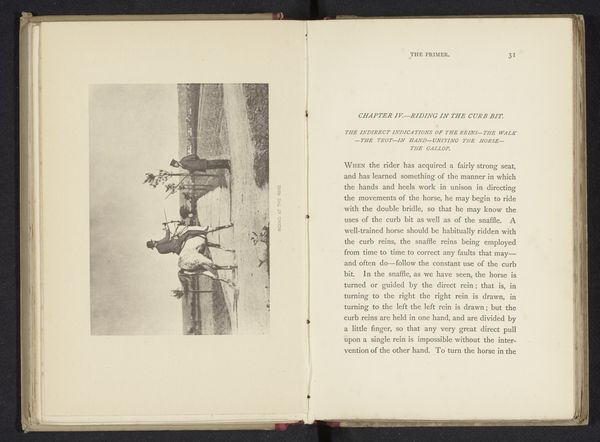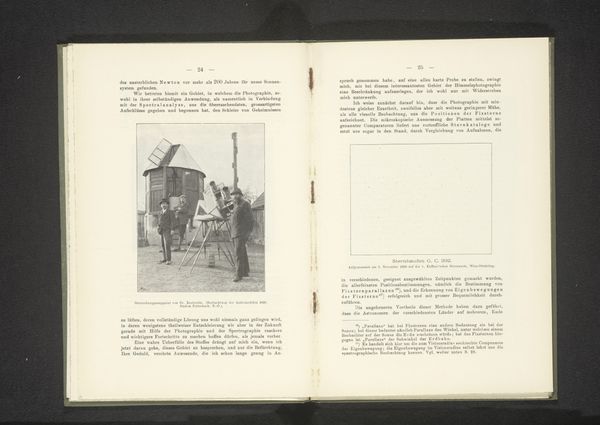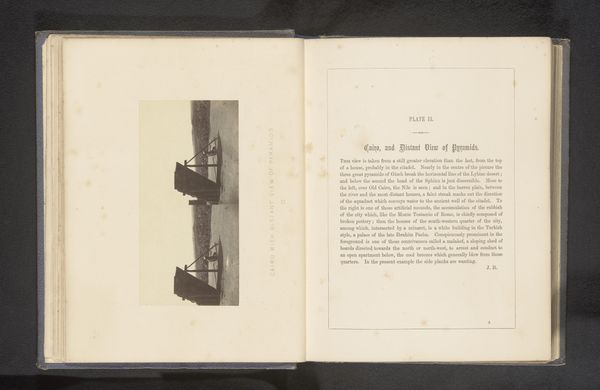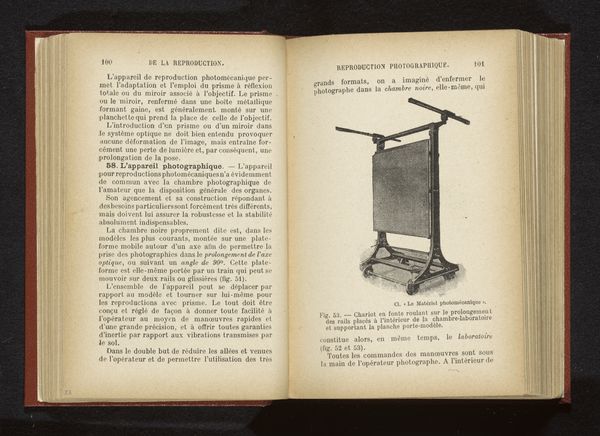
print, photography, engraving
# print
#
photography
#
coloured pencil
#
history-painting
#
engraving
Dimensions: height 150 mm, width 92 mm
Copyright: Rijks Museum: Open Domain
Curator: This image, "Guillotine met daarachter een mand om het hoofd in op te vangen," made before 1890, is quite striking, isn't it? It’s presented as a print in a book. Editor: Yes, the engraving is quite detailed, even if the subject matter is grim. What do you see when you look at it? Curator: I see a potent symbol of power, control, and ultimately, the spectacle of state-sanctioned violence. The guillotine, with its cold, mechanical efficiency, speaks volumes about the French Revolution and its legacy of justice and terror. Consider its role within the context of social upheaval and the restructuring of power dynamics. Editor: The basket seems… almost mundane. Is that intentional? Curator: Absolutely. That jarring juxtaposition, the ordinary basket paired with the extraordinary horror of the guillotine, is crucial. It normalizes violence, turning it into a routine procedure. The photograph and surrounding text within the opened book seems to almost 'archive' violence; does that feel accurate to you? Editor: It does, and it makes me think about the different ways in which historical narratives are constructed. Who gets to tell the story and from what perspective? Curator: Precisely! This image prompts us to interrogate the visual rhetoric of power. How did depictions of instruments of death influence public perception, and to what extent did these images serve as a tool for social control? Who do you think that image would serve best? Who do you think it would intimidate? Editor: It's definitely given me a lot to think about, particularly in terms of how art reflects and reinforces societal structures. I appreciate you making the historical implications come to life, as well as demonstrating whose views these images supported. Curator: And I think you’ve pinpointed something essential: that these older images can tell us quite a bit about power structures still lingering today.
Comments
No comments
Be the first to comment and join the conversation on the ultimate creative platform.

